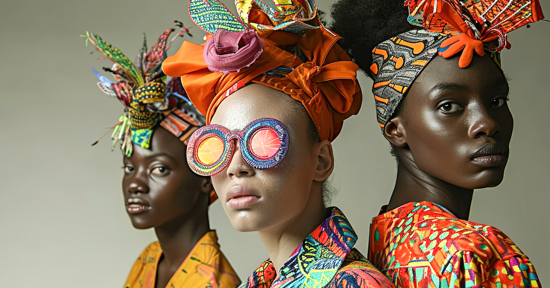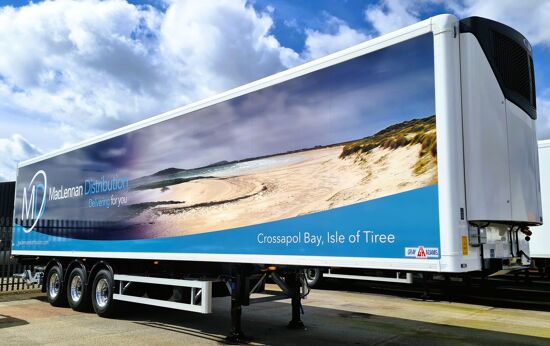What distinguishes fine art printing from other print jobs?

Nessan Cleary shares the difference between fine art printing and other print jobs as well as discussing the advantages of Giclee print and the importance of using high quality substrates and accurately colour managing the print.
Fine art prints represent a small but not insignificant part of the overall wide format print market. They are typically sold by museums, galleries and, of course, artists. For the most part, we are talking about reproductions of one-off artworks such as paintings, collages and so on though the same principle can also be applied to photographs.
Naturally these prints start from a very high resolution scan, or in the case of modern photography, an original digital file. The actual printing however, can vary. In theory, the more prints that you can make, the higher the return. So, a few thousand prints on an offset litho press would seem like the ideal solution. Another alternative, might be to print on-demand as part of a web-to-print system, for which a production printer should work for prints up to A3 or a wide format printer for prints of any size.
However, those prints that can demonstrate a much higher production values can have a value that goes far beyond a run of the mill print, particularly where they are sold as part of a limited edition. Such prints are often referred to as Giclée prints, but what does this term actually mean?
The American printmaker Jack Duganne is usually credited with being the first person to use the term Giclée to refer to fine art prints made with an inkjet printer. The word itself comes from a combination of the French word gicleur, for nozzle, and its associated verb, gicler, to squirt or jet.
Duganne had been working as a serigraphic print maker, which essentially means using screen printing for fine art work. Around 1991 he started working with the then newly-established fine art printing company Nash Editions. The company was funded by the musician Graham Nash (of Crosby, Stills and Nash) who was also an accomplished photographer. To start with, they used Nash’s own Iris Graphics 3047 inkjet printer, which was donated to the Smithsonian in 2005. Nash Editions is still operating but today uses Epson printers.
Readers of a certain age will remember that you needed a fair amount of patience, skill and sheer luck to coax a decent print from those early Iris machines, and yet there was nothing else available at the time that could come close to the same print quality. Nash and Co experimented with different inksets to overcome some of the Iris’s idiosyncrasies, eventually adopting the term Giclée to differentiate the results they could achieve from the standard proofing prints that the Iris machines were normally used for.
There’s no set definition of what Giclée means and modern wide format machines are considerably more advanced than those old Iris printers. Consequently, many modern printers are capable of the features that Duganne was trying to achieve, and that we now associate with the term Giclée, though inevitably some machines are more suitable than others. Nonetheless, there are a number of areas that anyone reproducing fine art prints should be aware of.
The most obvious of these is high resolution image quality, which most commercial printers today can manage with ease. Then there is the colour gamut, with the most suitable printers being the top of the range photo printers that are sold by Epson, Canon and HP. These all use water-based inks with pigments rather than dye to guarantee more vibrant longer lasting colours.
 This Canon ImagePrograf Pro 6600 uses a 12-colour Lucia Pro II inkset specifically for the high end photography and fine art markets. ©Nessan Cleary
This Canon ImagePrograf Pro 6600 uses a 12-colour Lucia Pro II inkset specifically for the high end photography and fine art markets. ©Nessan Cleary
These printers typically have inksets up to 12 colours that are capable of reproducing the widest colour gamut. They normally include light colours for better gradation, plus other colours, such as red and blue, as well as the usual CMYK. They will also offer several variants around black, such as a grey and light grey plus a matte black to avoid too much reflection whilst still reproducing a full range of tones for monochrome photographs. These printers also include solutions for dealing with gloss differential, where there is a difference in the gloss level across a print, and with the bronzing effect that’s caused by light reflecting from the media through the inks and scattering in different directions.
It’s worth noting that some modern UV-curable inksets are also capable of reproducing reasonably wide colour gamuts. Most of these printers tend to be limited to four or six colours but there are some that can be configured with up to 10 colours to improve their colour gamut. Such UV printers can add an extra feature through textured effects by applying layers of UV ink. Since each ink drop cures instantly it’s possible to print successive drops on top of each cured drop to build up ridges and other textures. As such it’s possible to perfectly reproduce an oil painting right down to the individual brush strokes though this is not seen as a requirement to qualify as a Giclée print.
The other key element is the range of substrates, which play a major part in establishing the feel of a fine art print. Most people agree that Giclée prints should be of archival quality, meaning that they are certified to last for 100-200 years. This is partly because the Iris prints had a reputation for fading, which Duganne was trying to counter. But it’s mainly because longevity increases the value of the print, and value is fundamental to anything connected with fine art.
That typically means printing to thick cotton-based acid-free and lignin-free archival papers that are designed to hold the image for a rated period, typically over 200 years. Some people might also use materials such as canvas, which can give an even more authentic look for a painting.
In conclusion, the principle advantage of a Giclée print is that it is perceived to be a higher value product, meaning that anyone offering this service should be able to charge a higher cost and to set a higher profit margin. You will have to have an appropriate printer, and to use high quality substrates, and be able to accurately colour manage the print to the original artwork. Ideally you should advise customers on how to keep the print out of direct sunlight to maximise its longevity. And of course, being able to advertise the capability to produce Giclée prints will help other parts of the business.
To discover the latest content that covers a wide range of sectors including fine art, wide format print and colour management sign up for FESPA’s free monthly newsletter FESPA World available in English, Spanish and German.
Interested in joining our community?
Enquire today about joining your local FESPA Association or FESPA Direct
Recent news

Can fast fashion be sustainable?
James Gatica discusses the challenges faced with fast fashion and sustainability. He states that it is important that fast fashion changes how fashion is produced with textile printing at the core of this needed change.

How sustainable is vehicle wrapping?
Vehicle wrapping is a great business opportunity for many printers, as it is popular with customers. Sonja Angerer discusses Climate Change and the global shortage of resources in relation to the sustainability of car wrapping. Sonja also shares the advantages and disadvantages of wrapping and how this relates to the environment and how you can avoid wasting resources.

